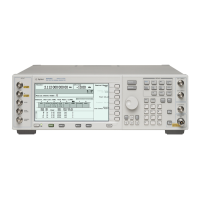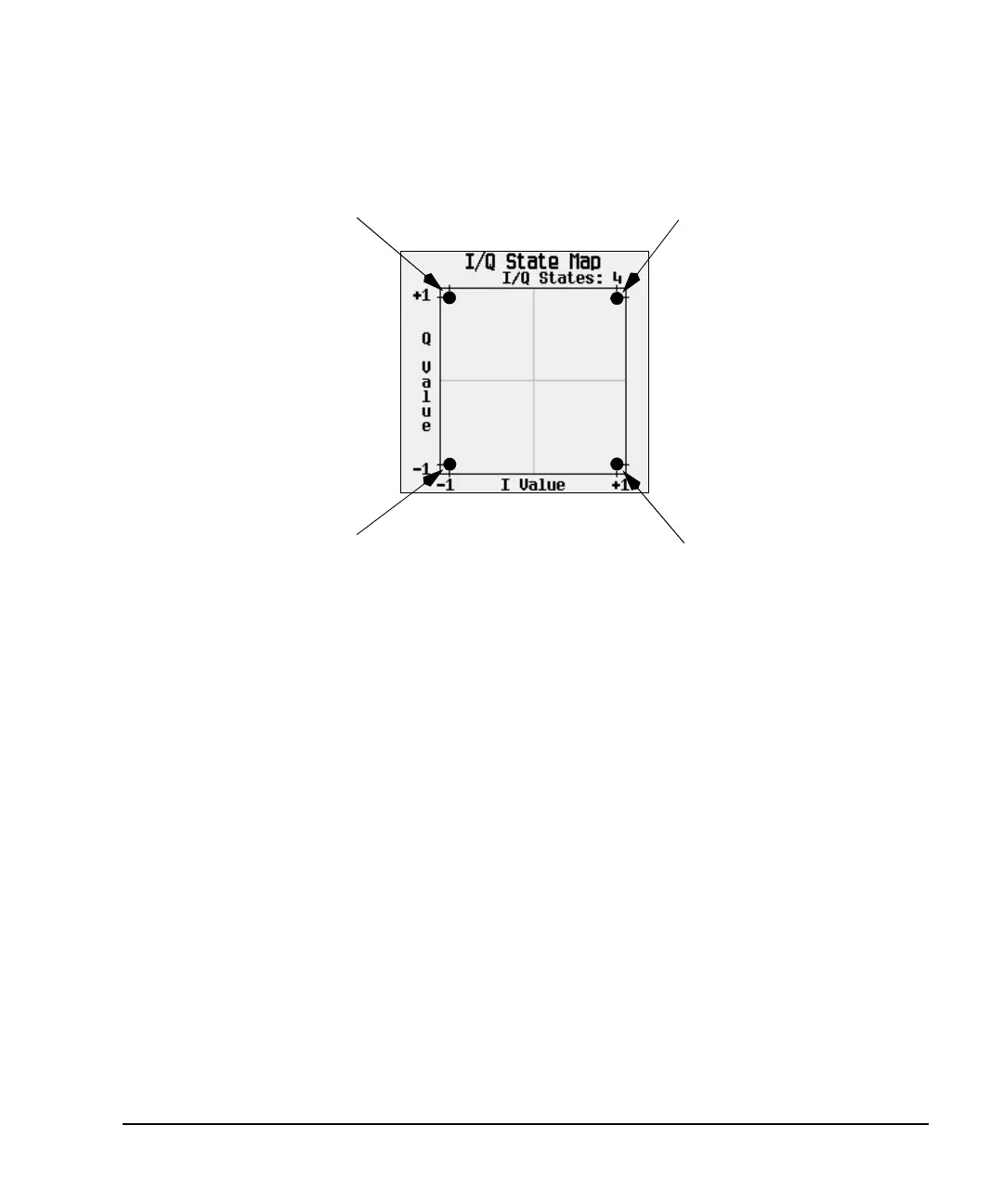Chapter 4 181
Basic Digital Operation
Differential Encoding
The following illustration shows a 4QAM modulation I/Q State Map.
Differential Data Encoding
In real-time I/Q baseband digital modulation waveforms, data (1’s and 0’s) are encoded, modulated onto a
carrier frequency, and subsequently transmitted to a receiver. In contrast to differential encoding (described
on page 180), differential data encoding modifies the data stream prior to I/Q mapping. Where differential
encoding encodes the raw data by using symbol table offset values to manipulate I/Q mapping at the point of
modulation, differential data encoding uses the transition from one bit value to another to encode the raw
data.
Differential data encoding modifies the raw digitized data by creating a secondary, encoded data stream that
is defined by changes in the digital state, from 1 to 0 or from 0 to 1, of the raw data stream. This
differentially encoded data stream is then modulated and transmitted.
In differential data encoding, a change in a raw data bit’s digital state, from 1 to 0 or from 0 to 1, produces a
1 in the encoded data stream. No change in digital state from one bit to the next, in other words a bit with a
value of 1 followed by another bit with a value of 1 or a bit with a value of 0 followed by the same, produces
a 0 in the encoded data. For instance, differentially encoding the data stream containing 01010011001010
renders 1111010101111.
Differential data encoding can be described by the following equation:
1st Symbol
Distinct values: +1, +1
Data = 00000000
2nd Symbol
Distinct values: -1, +1
Data = 00000001
4th Symbol
Distinct values: +1, -1
Data = 00000011
3rd Symbol
Distinct values: -1, -1
Data = 00000010
1
2
3
4
transmittedbit i() databit i 1–()= databit i()⊕

